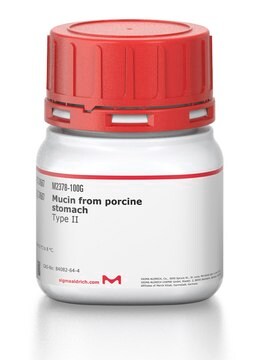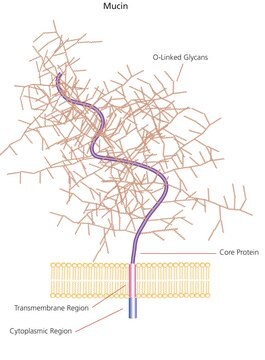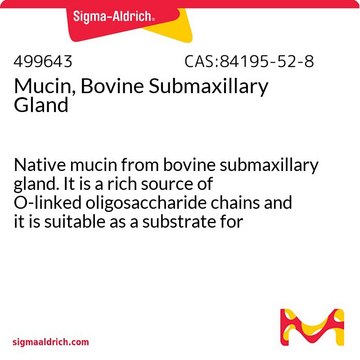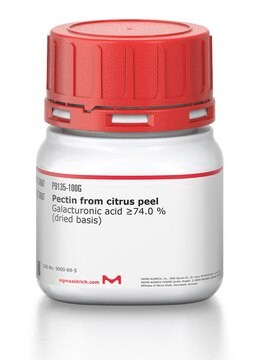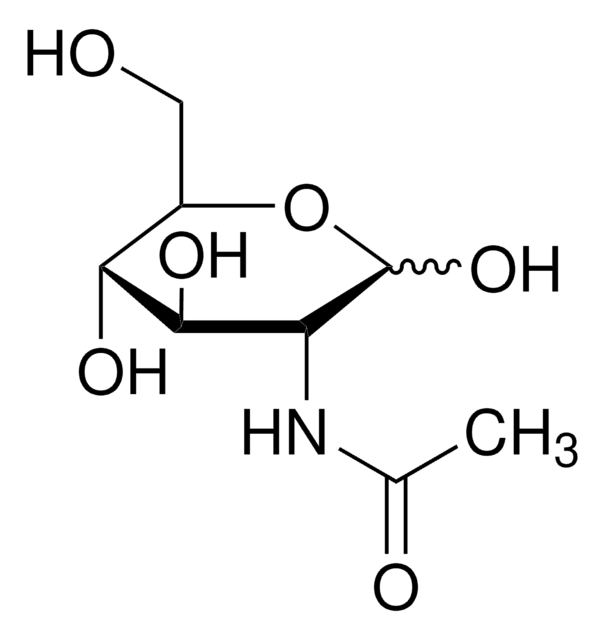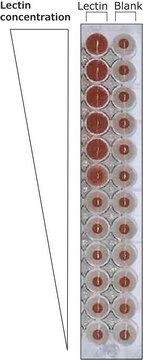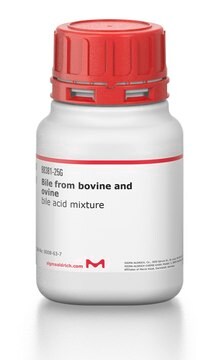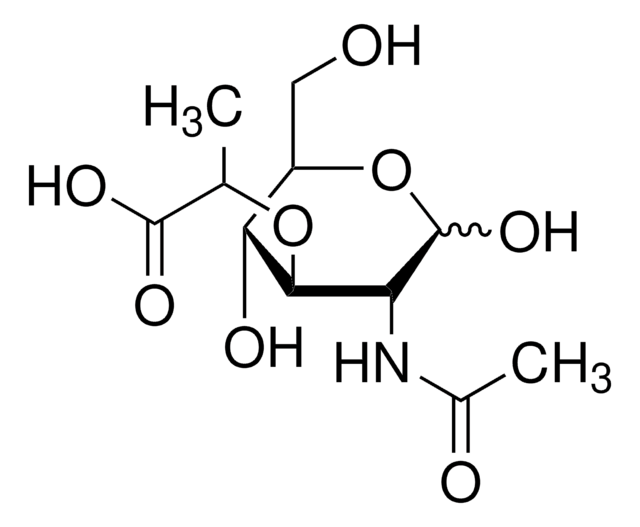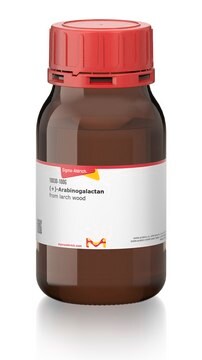M1778
Mucin from porcine stomach
Type III, bound sialic acid 0.5-1.5 %, partially purified powder
Synonym(s):
MUC
Sign Into View Organizational & Contract Pricing
All Photos(2)
About This Item
Recommended Products
biological source
Porcine stomach
Quality Level
type
Type III
form
partially purified powder
composition
bound sialic acid, 0.5-1.5%
technique(s)
microbiological culture: suitable
solubility
NaOH: soluble 20 mg/mL
storage temp.
2-8°C
Looking for similar products? Visit Product Comparison Guide
General description
Mucins or mucus glycoproteins are the main macromolecular components of mammalian mucus. It was also used in a study to evaluate the sputum smears concentrated by cyto-centrifugation for detection of acid-fast bacilli.
Application
Mucin from porcine stomach was used in studies on the binding site of the galactose-specific agglutinin PA-IL from Pseudomonas aeruginosa.
Biochem/physiol Actions
Mucus forms the protective cover for all epithelial surfaces. The major structural component of mucus is gel-forming mucins. The mucus layer covering the intestinal epithelium has the MUC2 mucin as its central molecule. MUC2 is produced by goblet cells.
Preparation Note
Prepared according to the method of Glenister, et al., for use in complex growth media for dental plaque bacteria.
Storage Class Code
11 - Combustible Solids
WGK
WGK 3
Flash Point(F)
Not applicable
Flash Point(C)
Not applicable
Personal Protective Equipment
dust mask type N95 (US), Eyeshields, Gloves
Certificates of Analysis (COA)
Search for Certificates of Analysis (COA) by entering the products Lot/Batch Number. Lot and Batch Numbers can be found on a product’s label following the words ‘Lot’ or ‘Batch’.
Already Own This Product?
Find documentation for the products that you have recently purchased in the Document Library.
Customers Also Viewed
Anastasia Matthies et al.
Applied and environmental microbiology, 74(15), 4847-4852 (2008-06-10)
The metabolism of isoflavones by gut bacteria plays a key role in the availability and bioactivation of these compounds in the intestine. Daidzein and genistein are the most common dietary soy isoflavones. While daidzein conversion yielding equol has been known
Helen Rose et al.
The Journal of antimicrobial chemotherapy, 63(3), 502-510 (2009-01-21)
The Burkholderia cepacia complex (Bcc) species are important opportunistic pathogens with intrinsic antibiotic resistance. They are also well known as contaminants of disinfectants, yet their biocide susceptibility has not been studied in detail. We investigated Bcc biocide susceptibility and correlated
Kenny C Mok et al.
mBio, 11(6) (2020-12-10)
The beneficial human gut bacterium Akkermansia muciniphila provides metabolites to other members of the gut microbiota by breaking down host mucin, but most of its other metabolic functions have not been investigated. A. muciniphila strain MucT is known to use
Gabriel M F Almeida et al.
mBio, 10(6) (2019-11-21)
Metazoans were proposed to host bacteriophages on their mucosal surfaces in a symbiotic relationship, where phages provide an external immunity against bacterial infections and the metazoans provide phages a medium for interacting with bacteria. However, scarce empirical evidence and model
Leyuan Li et al.
Microbiome, 8(1), 33-33 (2020-03-13)
Human-targeted drugs may exert off-target effects or can be repurposed to modulate the gut microbiota. However, our understanding of such effects is limited due to a lack of rapid and scalable assay to comprehensively assess microbiome responses to drugs. Drugs
Our team of scientists has experience in all areas of research including Life Science, Material Science, Chemical Synthesis, Chromatography, Analytical and many others.
Contact Technical Service